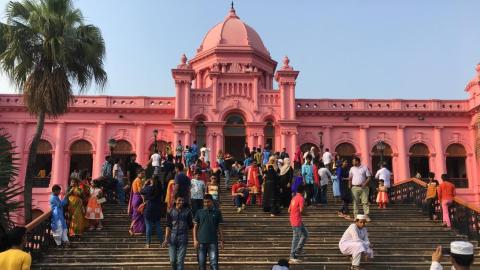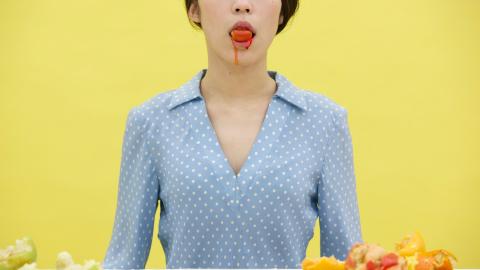Bangladesh
By Tarun Nagesh
Artlines | 1-2018 | | Editor: Stephanie Kennard
Situated in the heart of the Bengal Delta, Dhaka is one of South Asia’s booming centres. A city of 17 million people, it has the highest number of rickshaws in the world and a reputation for some of the worst traffic. The energetic city is also becoming one of the region’s art centres, home to a number of small organisations and artist collectives, with a unique history of international exhibitions and ambitious new ventures. Dhaka has been home to the Asian Art Biennale since 1981, which, while remaining at a modest scale, provided an early stage for exchange across Asia. More recently, the Dhaka Art Summit, founded by the Samdani Art Foundation in 2012, has had an enormous global reach. The Summit has become one of the largest platforms in the region, creating unprecedented opportunities for Bangladeshi artists, and challenging the established art centres of India and Pakistan. QAGOMA recently partnered with the Dhaka Art Summit to research Bangladeshi contemporary art and develop co-commissions, resulting in new projects to be showcased in APT9.
Ahsan Manzil (Pink Palace), Dhaka / Photograph: Tarun Nagesh
Several other long-running organisations have been influential in developing contemporary art in Bangladesh. The Britto Arts Trust is an artist network overseen by some of the country’s more senior artists, while being steered by younger generations. The Trust has been fostering practices since 2002. The Pathshala South Asian Media Institute has been a breeding ground for the development of photography, film and video works since it began in 1998, and is partly responsible for the strong reputation the country has built for producing talented artists in these fields in recent years. Since 2000, Pathshala has also organised Chobi Mela, the single largest photography festival in Asia, which draws impressive crowds.
The art scene has a distinctly urban flavour, invigorated by the bustling capital, where collective practices and socially engaged projects are imbued with the colour and vitality of the city. Nevertheless, a number of groups are also active in other parts of the country, where exchange with indigenous and regional communities is incredibly vibrant. Language and poetry are valued aspects of Bangladeshi culture, with its history of independence formed by a desire to choose its own national language. Writers and poets, such as Rabindranath Tagore, are celebrated as part of the national character. Language is a palpable influence in many artists’ practice, along with the country’s long history of textile production, its vibrant folk arts, and the contemporary social and environmental issues facing its population.
Tarun Nagesh, Associate Curator, Asian and Pacific Art.

